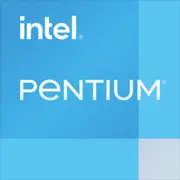Intel Pentium A1018

Intel Pentium A1018: A Budget Processor for Basic Tasks in 2025
April 2025
In an era where neural networks and ray-traced games have become the norm, processors like the Intel Pentium A1018 seem like an anachronism. However, even in 2025, such chips find their niche. Let’s explore who this CPU is suitable for and what compromises one must make.
Architecture and Process Technology: The Legacy of Ivy Bridge
The Pentium A1018 is built on the Ivy Bridge microarchitecture (3rd generation Intel Core), which was released in 2012. Despite its age, in 2025 it can still be found in budget laptops priced at $300–400.
- Process Technology: 22 nm — an outdated standard, which means the chip lags behind modern 7 nm and 5 nm competitors in energy efficiency.
- Cores and Threads: 2 cores, 2 threads. No support for Hyper-Threading, which limits multitasking.
- Clock Speeds: Base frequency is 2.1 GHz, with no Turbo Boost.
- iGPU: Integrated Intel HD Graphics (Ivy Bridge generation). Supports DirectX 11, 4K video (via HDMI 1.4), and basic acceleration in applications like Photoshop.
Architecture Features:
- Supports AVX and SSE 4.2 instructions, but lacks AVX2 and AI acceleration.
- L3 cache — 2 MB — is insufficient even for office tasks in 2025.
Power Consumption and TDP: Why is 35W Too Much?
A TDP of 35W is high for modern ultrabooks. For comparison, the Intel Core 13th generation (U-series) consumes 15W while offering greater performance.
- Consequences: Laptops with the A1018 require active cooling (fan), which increases weight (1.8–2.2 kg) and decreases battery life.
- Thermal Management: Under load, the chip heats up to 75–80°C, which may cause throttling in compact chassis.
Performance: What to Expect in 2025?
Geekbench 6:
- Single-Core: 312 points — comparable to Intel Core i5-3320M (2012).
- Multi-Core: 511 points — twice as low as the Core i3-1215U (2022).
Real-World Tasks:
- Office Work: Using Word, Excel, and a browser with 5–7 tabs is acceptable but will experience lag with heavy PDFs or online presentations.
- Multimedia: Watching 4K videos on YouTube is possible, but rendering in DaVinci Resolve will take 3–4 times longer than on a Core i5 from the 12th generation.
- Gaming: Only older games (CS:GO, Dota 2) can run on low settings (720p, 30–40 FPS). Modern titles like Cyberpunk 2077 will not run.
Turbo Mode: Absent. The frequency is fixed at 2.1 GHz, making the chip predictable but slow.
Use Cases: Who Should Consider the Pentium A1018?
- Students: For attending Zoom lectures, working with documents and spreadsheets.
- Retirees: Internet browsing, online banking.
- Office Workers: Where corporate laptops are issued with minimal specifications.
Not suitable for:
- Freelancers working with graphics.
- Gamers (except retro game enthusiasts).
- Those using "heavy" applications (virtual machines, video editing).
Battery Life: How Long Will It Last?
With a TDP of 35W and lacking modern power-saving technologies (like Intel Thread Director), the battery life is modest:
- Average Load: 4–5 hours (with a battery capacity of 40 Wh).
- Idle: Up to 7 hours.
Power Saving Technologies:
- Intel SpeedStep: Dynamic frequency reduction during idle.
- C-states: Turning off unused components.
Advice: Choose laptops with batteries of at least 50 Wh — for example, the Acer Aspire 3 (2025) for $349.
Comparison with Competitors
- AMD Athlon Silver 7120U (4 nm, 2024): 2 cores/2 threads, but superior IPC and DDR5 support. Geekbench 6 Single-Core — 420. Laptop prices start at $400.
- Intel Celeron 7305 (10 nm, 2023): 5 cores (1 P-core + 4 E-cores), TDP 15W. Better multitasking performance.
- Apple M1 (2020): In used MacBook Airs — performance is twice as high with a TDP of 10W. However, new devices with M1 are not sold in 2025.
Conclusion: The A1018 lags behind even budget newcomers but is cheaper.
Pros and Cons
Strengths:
- Low price of laptops ($300–400).
- Sufficient for basic tasks.
- Repairability (replaceable SSD, RAM).
Weaknesses:
- No support for Wi-Fi 6E, Thunderbolt 4.
- Slow SSD (often PCIe 2.0 x2).
- Limited upgrade options (memory may be soldered).
Laptop Selection Recommendations
- Device Type: Budget laptop (not ultrabook!). Examples of 2025 models:
- Lenovo IdeaPad Slim 1 ($329): 8 GB RAM, 256 GB SSD, 15.6″ HD display.
- HP 15-dw2000 ($349): 8 GB RAM, 512 GB SSD, Windows 12 SE.
What to Look For:
1. Display: Full HD is preferred over HD (1366x768).
2. RAM: 8 GB is the minimum for Windows 12.
3. Storage: SSD only (even 128 GB is better than HDD).
4. Ports: USB-C (at least for charging).
Final Verdict: Who Should Buy?
The Intel Pentium A1018 is a choice for those who aren't willing to spend more than $400 and need a device for:
- Working with documents and browsing.
- Watching movies and social media interaction.
- Using so infrequently that battery life is not critical.
Alternative: If your budget allows for $450–500, it's better to get a laptop with AMD Ryzen 3 7320U or Intel Core i3-N305 — they’ll last longer and won’t disappoint in speed.
The Pentium A1018 is an example of a "workhorse" that slowly but surely handles basic tasks. In 2025, such a processor is a conscious compromise, but nothing more.
Basic
CPU Specifications
Memory Specifications
GPU Specifications
Miscellaneous
Benchmarks
Compared to Other CPU
Share in social media
Or Link To Us
<a href="https://cputronic.com/cpu/intel-pentium-a1018" target="_blank">Intel Pentium A1018</a>